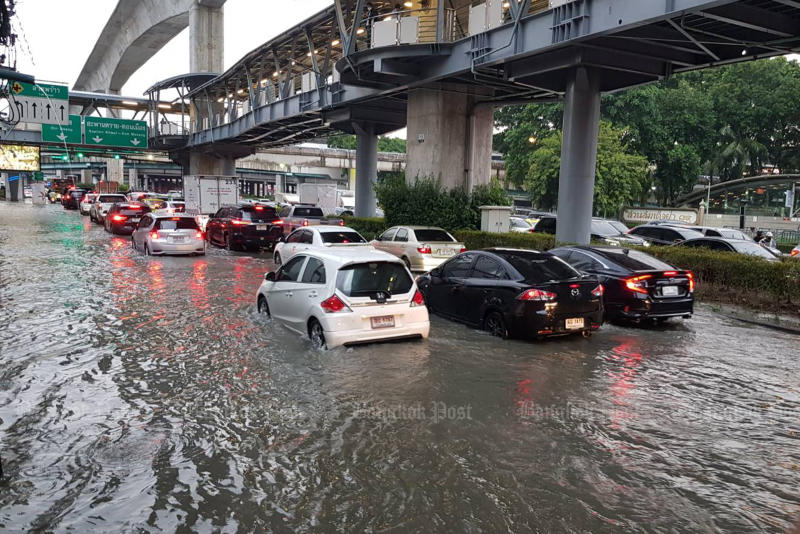
Located in a low-lying area on the Chao Phraya River basin, Bangkok covers an area of 1,569km² but it has little space for green areas that can be converted into flood retention areas.
The number of green areas per person is 6.99m², which is lower than the World Health Organization's recommendation of 9m² of green space per individual.
With limited green areas in the capital, the city also has limitations on its capacity for water retention, which is needed especially when the world is facing a global threat of climate change impacts.
"Excessive rain water needs to be managed. If there is no place to retain water, it will flood an area. The important thing is increasing water retention sites in the rainy season," said Assoc Prof Sucharit Koontanukulvong, a lecturer at the Department of Water Resources Engineering, Chulalongkorn University.
However, he admitted that it is not an easy task for a crowded and big city like Bangkok to set aside water retention areas due to the high price of land.
To make it possible, the Bangkok Metropolitan Administration needs to have lucrative incentives for land owners to offer their unused land for water retention, he said.
For example, the government could offer privileges to any real estate company by increasing the height of a building that is located in a limited high zone if the company agrees to provide water retention in exchange, he said. The incentives could also be tax exemptions for any company that could offer water retention sites.
Secondly, vacant land owned by state agencies, organisations or individuals should be converted to restore water in case of need, saying that public parks, for example, should be used for water retention because a study found that ground soil can keep 20% more water compared with a concrete surface.
He said Chulalongkorn University converts green areas into water retention zone by keeping water for a while.
The water will be let into a drainage system when the flooding situation on the road outside the university subsides, he said.
He also recommended the government collect a "flood tax", or "flood bond" to use the money for investments in flood-prevention infrastructure.
People living in potentially flooded areas could also be asked to pay the flood tax, with a lower rate for those who live in areas with high potential for floods, and a higher rate for those living in a low-potential flooding area.
He said an engineering system would partly solve the problem of flooding in the capital, including expanding the pipeline water drainage system, or even constructing a drainage tunnel under roads for flooded waters to flow into a river.
But it can't truly solve the problem because the world is facing the climate change phenomenon. Japan, for example, has expanded the water drainage system's capacity twice, but the amount of rainfall can be triple the average, he said.
He added the government should also invest more in an early warning system, which could tell people in advance how to prepare when there is an unusual rainfall pattern. The warning can help limit damages from asset losses in a flood.
Meanwhile, a source from the Meteorological Department (TMD) said the country could upgrade its weather forecasting ability if there is more investment in technology.
In highly vulnerable areas such as economic zones, a Decision Support System should be put in place offering better forecasts and a warning system to limit damages.
He said the country gains weather forecast data from international platforms, some of which do not match the country's geography. The TMD needs to develop its data platform for more accuracy, he said.

Assoc Prof Amnat Chidthaisong, deputy director of Joint Graduate School of Energy and Environment, King Mongkut's University of Technology Thonburi, said the government should put more focus on climate change impacts, especially unusual patterns of weather including droughts or floods.
The government should also strengthen weather-related agencies and create smart networks for them to work together and provide full support for better results.







